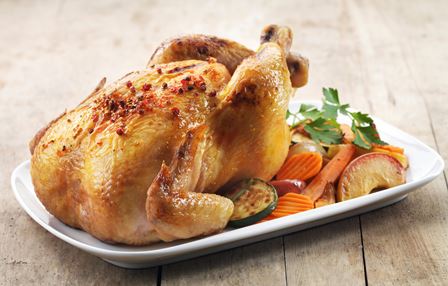Dr Paul Wigley, Reader in Foodborne Zoonoses at the University of Liverpool’s Institute of Infection and Global Health, comments on The Guardian’s investigation into campylobacter in the UK’s poultry industry.
“High levels of Campylobacter in poultry production are a fact.
“Up to 70% of UK retail poultry is contaminated with Campylobacter and it is estimated 1 in 100 people in the European Union are infected each year. This means over half a million people in the UK get diarrheoa from this bug every year with over 100 people dying as a consequence and many more developing long term neurological and gastrointestinal problems.
“Despite the burden of disease caused by Campylobacter it has remained very much ‘under the radar’ unlike the Salmonella, Listeria and BSE scares of the 1980s and 1990s. The problem of Campylobacter is top of the agenda for poultry producers and the Food Standards Agency (FSA) and a major concern for our major retailers.
“The intensive nature of production, transport, slaughter and processing give a range of opportunities for the bug to be spread through flocks and between carcasses. In a large chicken processing plant 200,000 animals may be slaughtered and butchered each day. If the first flock on the line that day has Campylobacter, then there is a strong likelihood that many of the whole birds or chicken portions leaving that day will be contaminated. Good hygiene, cleaning and following the correct procedures are vital in reducing these risks, but it would seem corners are being cut and errors are being made that impact directly on food safety.
Controls
Campylobacter is difficult to control in chicken production. Usually the bug survives in vast numbers in the chicken intestines and although it can occasionally make chickens ill, it is normally carried with no ill effect on the bird. The bug also spreads very quickly within a flock. It is not clear where Campylobacter comes from, though the practice of ‘thinning’ where a chicken shed is overstocked then a proportion taken for early slaughter is the largest single risk of a flock become infected.
“The controls that have been successful in reducing Salmonella in chickens are less effective, or in the case of vaccination, not available. A number of controls are being investigated both on the farm and after slaughter by FSA and the poultry industry, but these are costly and in most cases of questionable efficacy. Ultimately it is a difficult balance for an industry that operates on small margins between providing cheap and nutritious food and maintaining food safety. There is not specific legislation for Campylobacter control as there is for Salmonella. A danger of introducing any legislation is that it simply pushes production overseas where chicken can be produced even more cheaply but where standards in hygiene and animal welfare are lower.
Longer-term solutions
“Ultimately on-farm controls, such as vaccines or breeding of birds that are more resistant to Campylobacter infection, are likely to be more successful. However these are some way off and need greater support from government and industry. The focus on quick solutions to meet FSA targets on reduction of carcass contamination has to an extent ignored long-term solutions.
“Another worry is that emerging variants of Campylobacter are more likely to leave the gut and contaminate the liver and even meat are in danger of becoming more prevalent and even more difficult to control.
“The question I am often asked is “Do you eat chicken?” The answer is “yes” but I ensure that any chicken I eat is thoroughly cooked and I always practice good hygiene within the kitchen to avoid cross contamination. At present this the best, and perhaps, only thing that can be done to reduce the risk of Campylobacter infection.”
